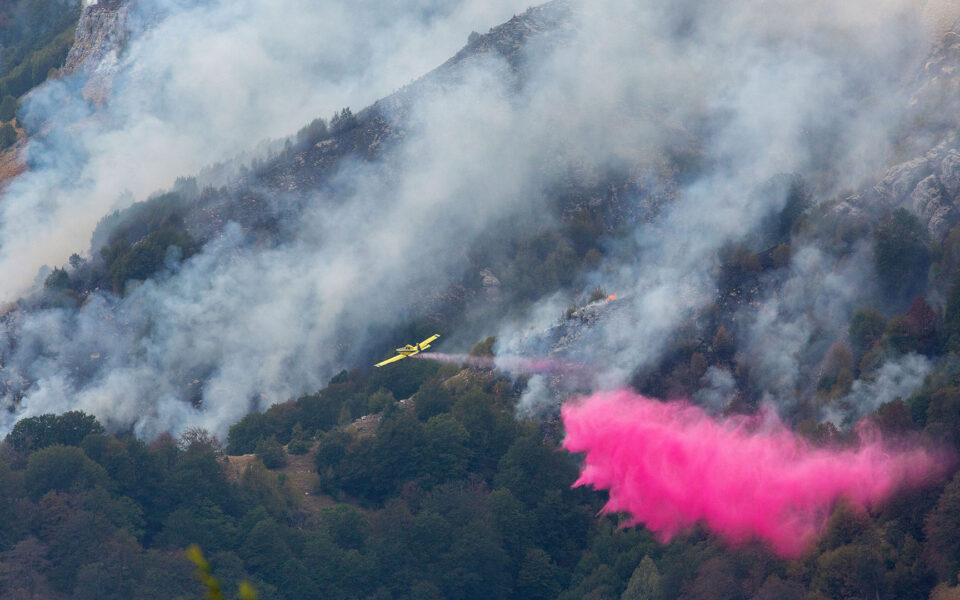Mount Pangaio and the difficulty in extinguishing creeping fires

Firefighters are continuing to battle a creeping fire that has been burning for four days on Mount Pangaio in the northern region of Macedonia.
A creeping fire is when a fire burns and spreads slowly, consuming the understory – bushes and vegetation – but not the crowns of trees.
While the fire service said the situation has improved considerably, the fire, which is believed to have already burned an area of 40-50 hectares, has not been fully extinguished.
“We have never experienced this before. We could never have imagined that we’d be dealing with such a fire two days before November,” said the Kavala deputy governor, Theodoros Markopoulos, who added that the fire is burning in an extremely difficult area with cliffs, which is frustrating the firefighting effort.
“Aerial means cannot help in this area. Only helicopters can have some effect,” he noted.
According to the fire service, due to the particular nature of the landscape, it has deployed mainly ground units at the site, namely 390 firefighters, with 57 groups of forest rangers.
The forestry chief in Kavala and Thassos, Yiannis Kapetanyiannis, who has about three decades of experience in the Pangaios, said that such a fire can only be extinguished with rakes and hoes by firefighters who must approach it through forest paths.

‘Not even a drop of rain’
As Kapetanyiannis underlines, this is not the first time that the area has experienced a fire like this.
“We saw a similar fire before in 1996 and also this summer on the other side of the forest, in the alpine zone,” he noted.
Although such fires are a natural phenomenon, he believes that the prolonged drought that has been observed since the summer in the area has also played a role in the development of this fire.
As he said, data from the local meteorological station showed that not a single drop of rain fell in October, which is truly unprecedented.
“Creeping fires occur due to the microclimatic conditions, mainly in early spring and late autumn,” according to Alexandros Dimitrakopoulos, forestry professor at the Aristotle University of Thessaloniki.
He also mentioned the role of the drought, saying that had there been heavy rains earlier the fire would not have occurred or would not have burned for so many days.
When asked if we have seen more creeping fires in recent years, he answered that the exact opposite is happening. “We’re seeing a lot more mixed or peak fires than creeping fires,” he said.
Referring to the large creeping fire that occurred on Mount Orvilos in Serres in the summer and burned for about a month, he noted that in that case altitude played a role, which created colder and harsher conditions. Consequently, the fire burned slowly and remained in the low vegetation but no one went to put it out.
“If this fire had been dealt with by firefighting means, even just by water-dropping planes, we would not have had this phenomenon,” he said.
Benefits
Dimitrakopoulos pointed out, however, that creeping fires can also be beneficial for forests. They clean the understory of bushes that are competitors in the regeneration of the forest of pine, and clean the organic matter. They also expose the mineral soil, making forest regeneration both easier and more successful.
However, creeping fires do not leave the microflora and microfauna – all those organisms that decompose the organic matter and return it to the soil – unaffected. Depending on the intensity of the fire, the seed bank – seeds that have been buried in the ground for a long time and are waiting for the right opportunity to sprout –can also be affected.
Hares and foxes can also be affected, as they lose their hiding places and sometimes their food.
Source: ekathimerini.com




